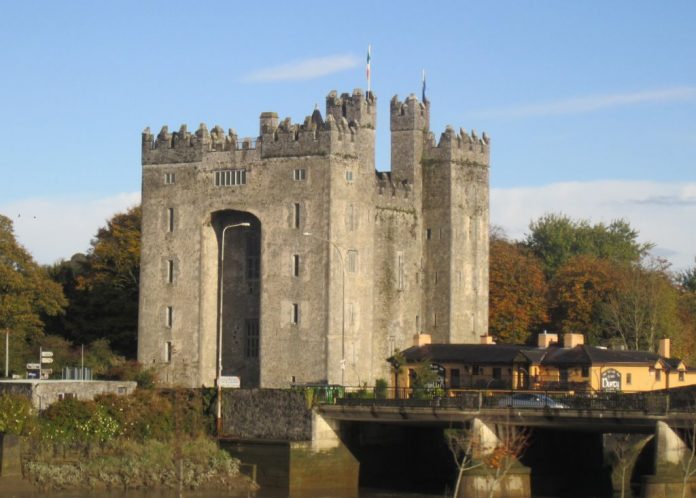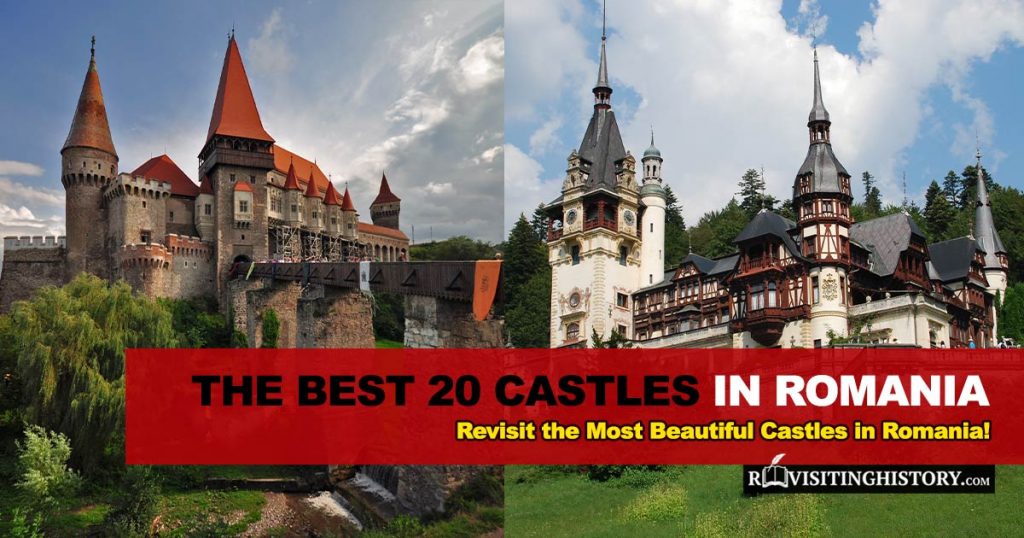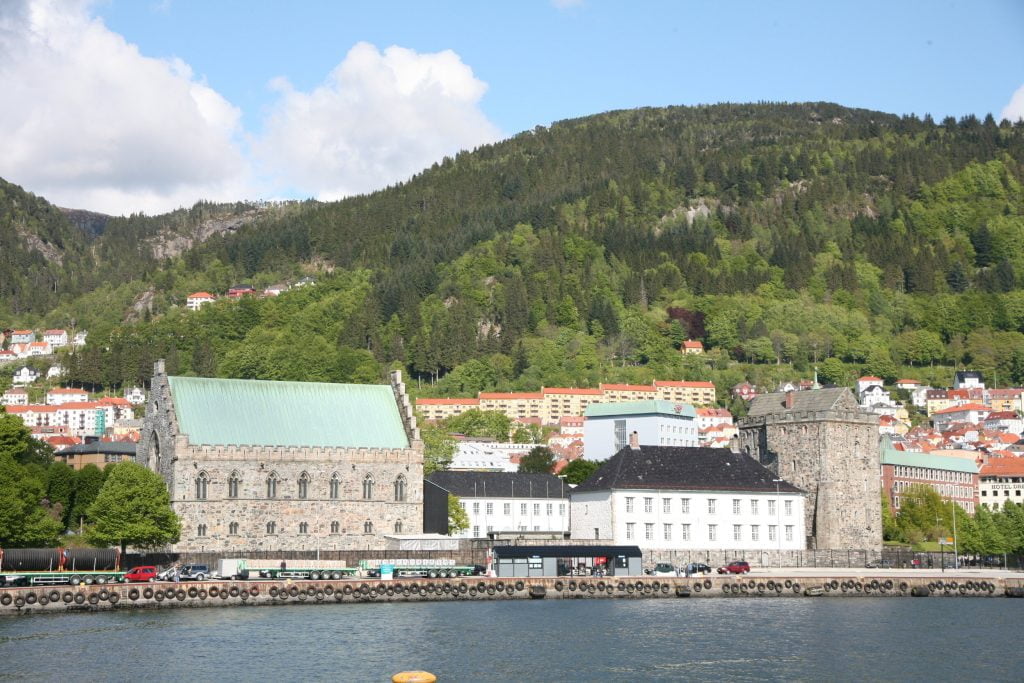Ireland’s County Clare is home to the magnificent 15th-century tower house known as Bunratty Castle. It is situated in the center of the village of Bunratty. Shannon Heritage manages the surrounding folk park and the castle as a tourist destination. The location of Bunratty Castle was first used as a Viking trade post around 970. The current building is the fourth and final castle to be built on the grounds.
When visiting Ireland, checking out Bunratty Castle is a must. If you are looking for a detailed guide, from the ideal visiting times to ticket prices, continue reading this article to the end. You will also be able to find some intriguing facts and details related to Bunratty Castle.
Table of Contents
Bunratty is perhaps one of the only castles in Ireland that includes an operating school and a folk park.
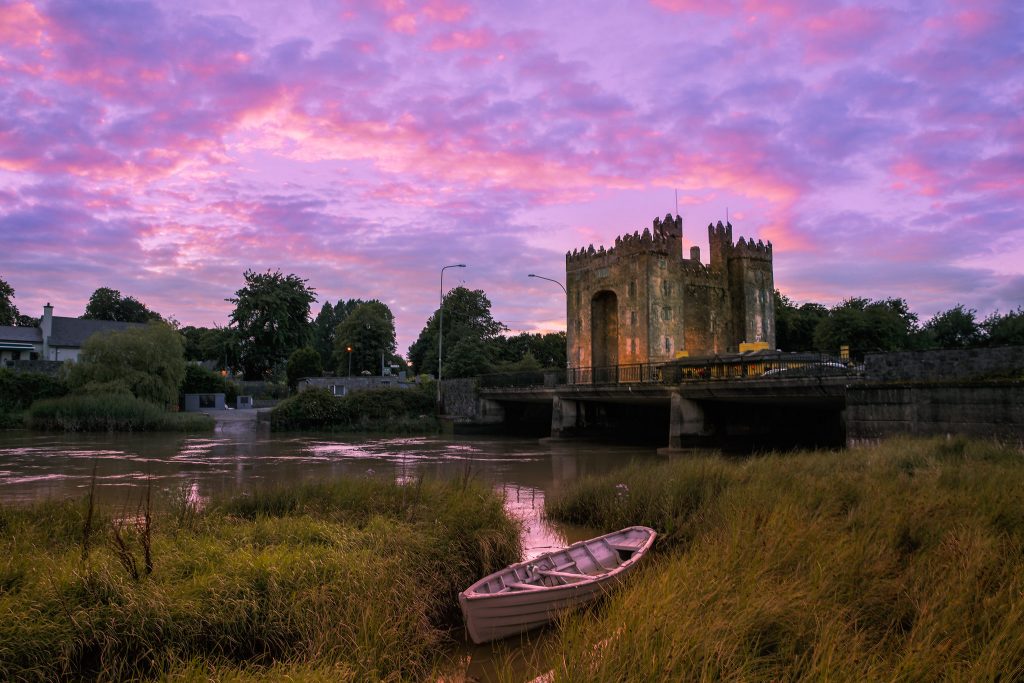
Frequently Asked Questions
Where is Bunratty Castle Located?
Bunratty Castle is located in County Clare, Ireland.
When was Bunratty Castle Built? Who Build It?
Around 1425, the powerful MacNamara family built the castle.
When is The Best Time to Visit the Castle?
Due to its popularity and being connected to a folk park, Bunratty Castle may get highly crowded during prime hours. If you want to visit when there are fewer people, it is ideal to arrive at the opening time or at least before 11 a.m.
Additionally, you may want to visit in the spring or summer when the weather is favorable so that you can explore the castle and fully enjoy the folk park, which is at its prettiest in the spring.
What Other Monuments are Located Nearby?
While visiting Bunratty Castle, you can explore a number of nearby attractions. Some of them are Daniel O’Connell Monument, Spirit Memorials, and Clarecastle GAA Monument.
FOR HISTORY | BEAUTIFUL IMAGES | INTERESTING FACTS | TRAVEL TIPS
Early History
Early Site Development (13th-15th Century)
The location of Bunratty Castle has always been regarded as an important site, since the Viking era. The Vikings were the first invaders to establish settlements around the present castle’s site and create significant trading connections in the area.
Bunratty Castle was constructed in County Clare in 1425 by a powerful local family, the McNamaras. The following wave of invaders, the Normans, arrived in the 13th century. When the invaders started to settle in, they had to carry a large-scale expulsion of the indigenous population. The local native clans of the O’Brien and McNamara were hostile towards the Normans due to this reason. Normans soon overpowered the indigenous population and occupied the castle.
After the Normas attacked and killed a member of the local clans, Brian Ruadh, the O’Brien and McNamara clans’ animosity for the Norman ruler became stronger. Following the event, they began to frequently attack the castle. At one point, they also demolished it, until finally forcing the Normans from the region in 1318. The last Normans burned the castle before boarding ships for England.
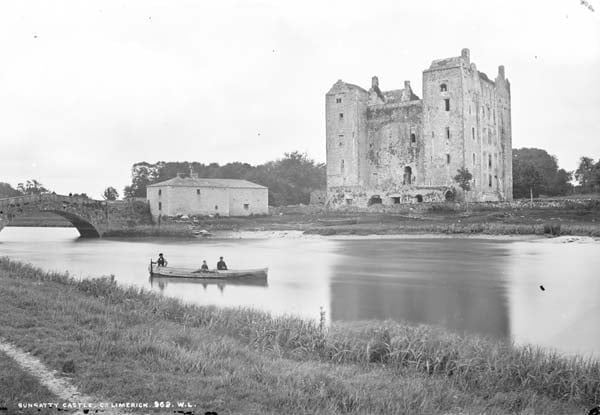
Bunratty Castle Rebuilt (15th Century Onwards)
The castle has been demolished eight times in its 800-year existence and rebuilt each time. The castle as we know it now was constructed in the tower house style and dates to the fifteenth century. It includes a central keep that has four towers attached to it, one at each corner. The center keeps features huge rooms, whilst the towers house the smaller, private chambers.
Confederate Wars (17th Century)
Bunratty again came under fire during the Irish Confederate Wars. The English Long Parliament’s armies occupied the stronghold in 1646. The Confederates finally took control of the castle after a prolonged siege until it was taken over by the O’Briens.
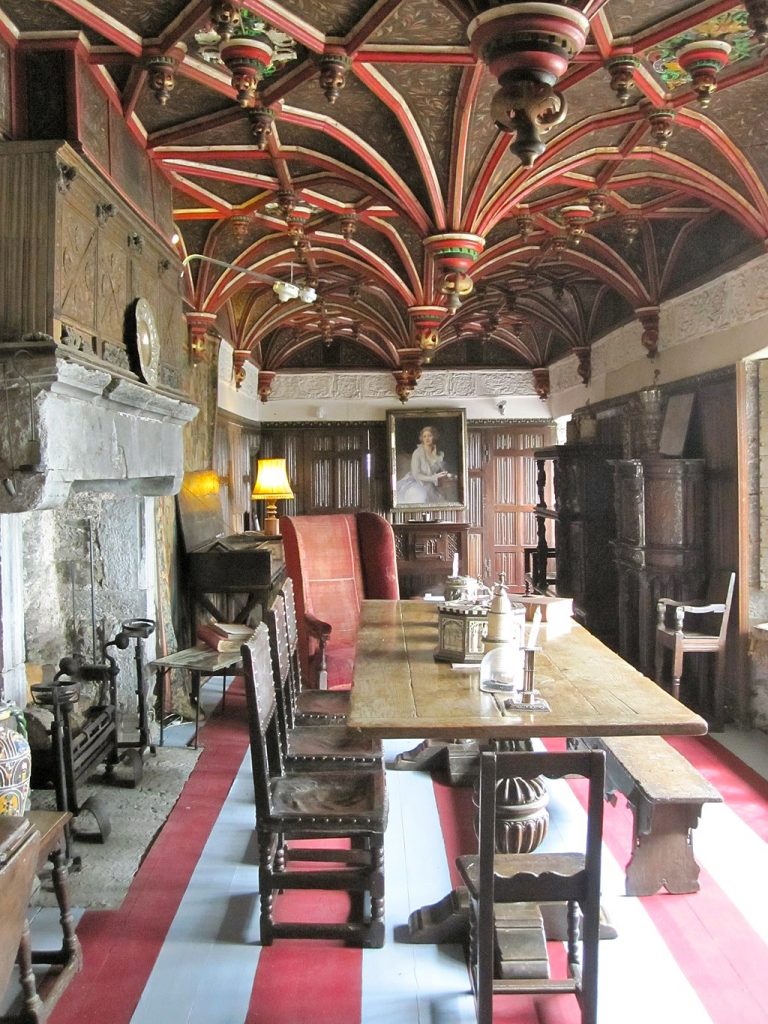
Reconstruction of the Castle (20th Century)
As the castle, again in ruins, was at risk of being demolished in 1953, Lord Gort bought the property. Due to his passionate interest in Irish medieval history, he made an immense effort to restore and furnish the castle building. Later, Lord and Lady Gort gave Bunratty Castle to the Irish people as a donation.
Revisit More Historic Places Below or Read Further
Current Times
In the 1960s, the castle was brought back to its former grandeur, and now it houses a lovely collection of medieval furniture and artifacts. The Bunratty Folk Park is also located on the castle grounds. Today, Bunratty Castle offers you not only a tour of the castle but a medieval meal, the Viking playground, a pet farm, and a breathtaking walled garden.
The Bunratty Medieval Banquets are held in the castle’s banquet room every night. Reservations must be made in advance since space is limited and may be done online at Shannon Heritage. The castle, as a wonderfully preserved tower house from the fifteenth century, is decorated with original artwork, tapestries, and furniture from the 15th and 16th centuries. You may get a sense of what it must have been like to live behind these massive stone walls in medieval Ireland as you tour the displays on all four stories of the castle.
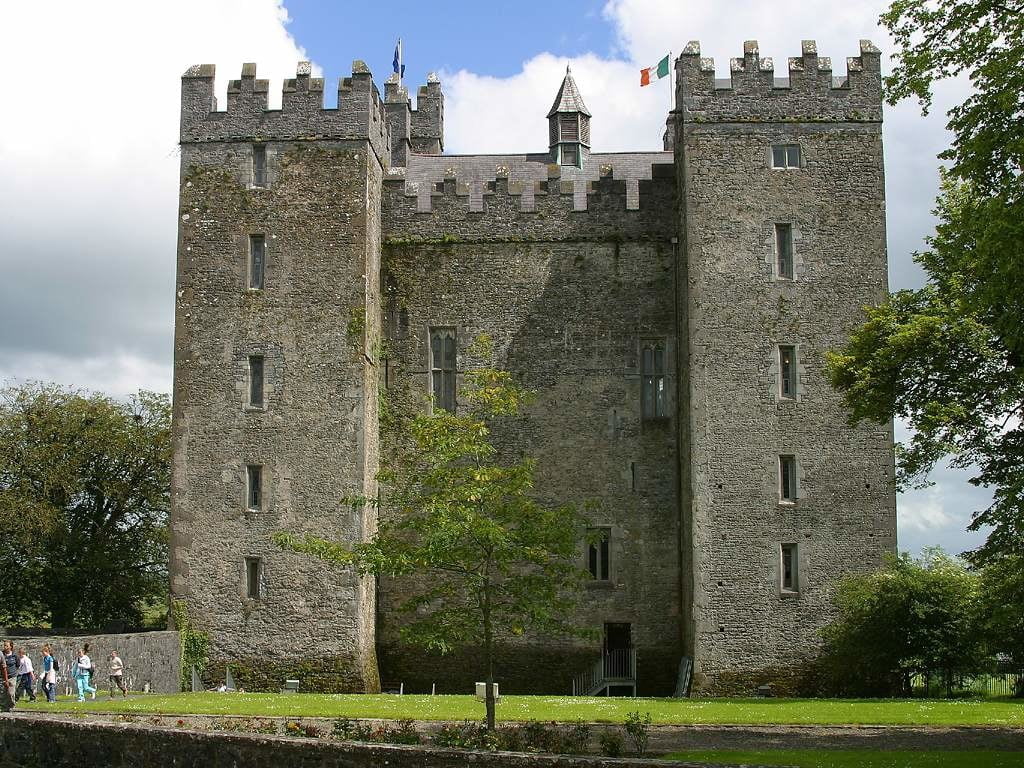
Bunratty Folk Park
To add to your historical experience, the Folk Park at the castle estate recreates a 19th-century “living village” experience. A school, a doctor’s office, a pawn shop, a pub, a drapery shop, a print shop, a grocery store, a hardware store, and a post office, along with recreated historical residences, are some of the thirty-odd buildings in this unique experience from the past. You may participate in the activities and daily routines of the villagers, who are represented by costumed interpreters. Don’t miss the chance to see and learn how the area operated in the 19th century.
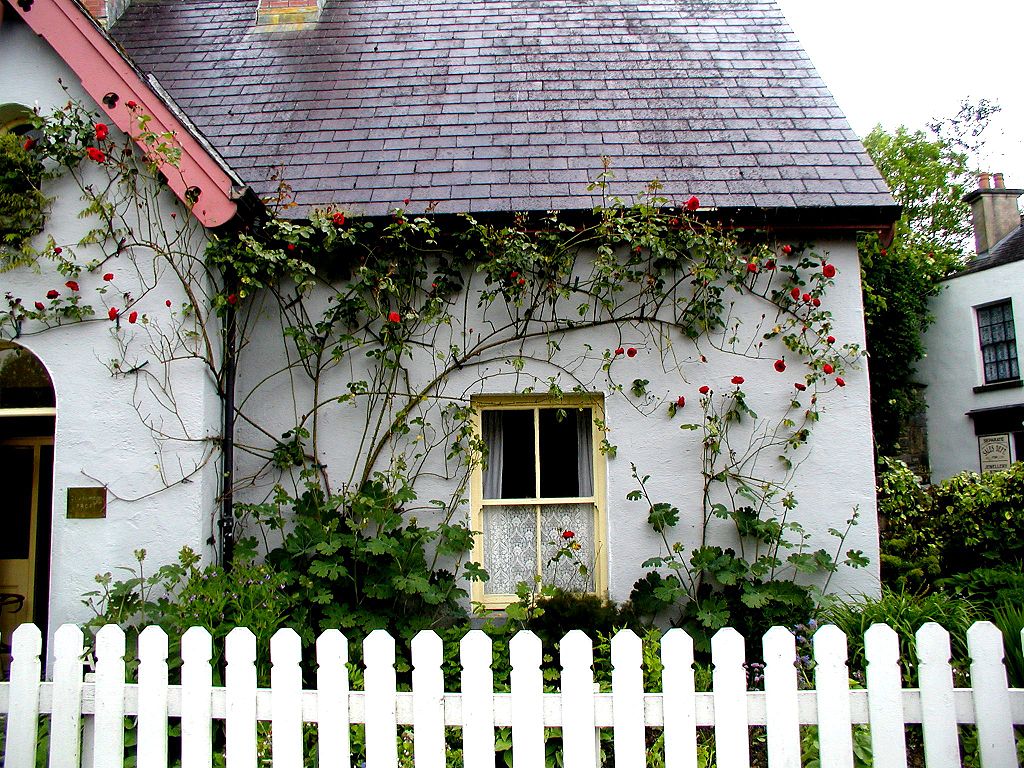
Interesting Bunratty Castle Facts
There are many interesting facts about Bunratty Castle. Below is a list of facts that you might find intriguing:
- As you visit the castle, you can relive history thanks to all the interior decor from the 15th and 16th centuries.
- Bunratty is perhaps one of the only castles in Ireland that includes an operating school and a folk park.
- The 26-acre folk park features 30 distinctive buildings that depict 19th-century life.
- The Ratty River, which flows directly by the castle to the Shannon Estuary less than one mile away, has the Irish name Bun Raite, which roughly translates to mean “river basin”. This inspired the present name of the castle.
- The earliest Bunratty Castle was built from timber. That castle didn’t endure more than a few years for unspecified reasons.
Visiting Bunratty Castle – Tips and Tricks
Bunratty Castle can transport you back in time. It is not only for historical tours but for a historical experience as well. Its antique furnishings and well-maintained architecture give you the impression that you are living in a past era. You will enjoy the genuinely Irish moments at the castle all year long.
If you’re keen to see this historic marvel, you can make your trip simple and enjoyable by using the tips and tricks listed below.
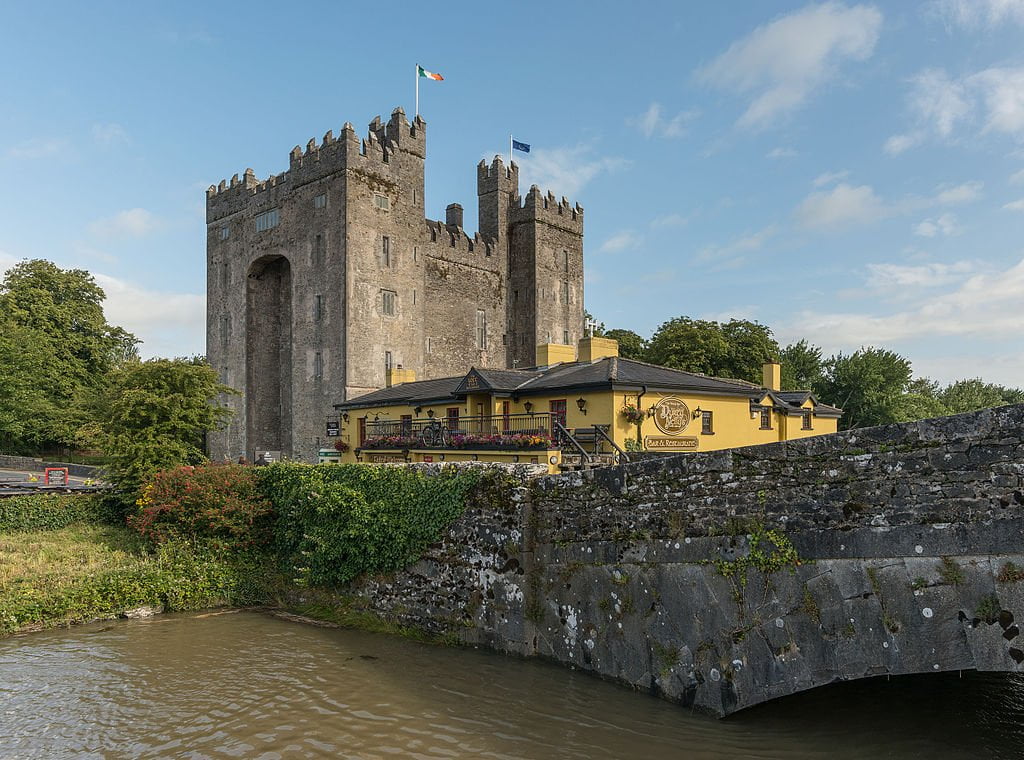
How to get to Bunratty Castle?
You can take a bus from Dublin and get to the castle in three hours which can cost you around €18 ($18 USD). You can catch the Dublin coach 300 from Burgh Quay, located in the south of the city.
If you drive from Dublin to Bunratty Castle, the fuel costs will be around €50 ($49 USD).
Ticket Prices, Visiting Hours & Travel Tips
Information was checked & updated on November 5, 2023.
The site is open to visitors every day from 9:00 am to 5:30 pm, except the 24th-26th of December.
The holiday season is, nevertheless, an excellent time to visit Bunratty Castle and Folk Park. The park will feature festive performances and will have activities for people of all ages, as well as stunning displays, illuminated streets, and wonderland-like walks.
Tickets for Bunratty Castle include entry to the castle proper and the Folk Park. Reservations can be made online at the Shannon Heritage website and the tickets may also be bought at the gate. The cost of the tickets is:
- Adult: €10 ($12 USD)
- Child 4-18yrs: €8 ($9 USD)
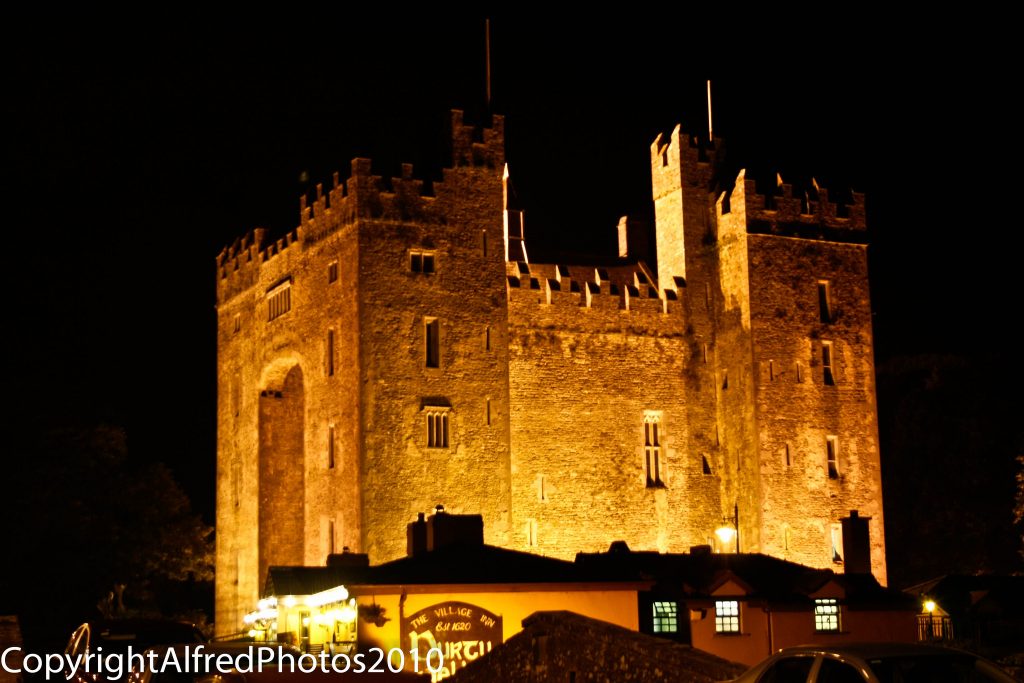
Things To Do at Bunratty Castle
Bunratty Castle offers several opportunities to enjoy yourselves and have fun. Several of these activities include:
- Every night from April to October at 7 o’clock, Irish Nights are hosted in The Corn Bar. On the menu are traditional Irish dishes made using ingredients that are grown nearby. Traditional Irish music is played during dinner, and there is a 40-minute after-dinner performance that includes music, storytelling, and Irish dancing.
- The famous Bunratty Medieval Castle Banquets are held in the castle every night at 5.30 p.m and 8.45 p.m.
- Additionally, don’t miss the Bunratty Walled Garden. Fresh fruits, herbs, and vegetables have been supplied to the castle by the classic Victorian garden since 1804.
- If you are bringing children, the Vikings Playground will be a perfect place for them to have fun and get all their energy out.
- The Fairy Village at the castle where you will find fairy people welcoming you and creating a magical experience for you.
- If you love watching a river slowly flow by, you also get to witness the magnificent sight from the rooftop because River Shannon flows nearby the castle.
How Long Will It Take to Tour Around?
You should be able to explore the castle, learn about its history, and enjoy the scenery in the gardens in about two hours.
Up to Date Information
For up to date ticket prices and visiting hours visit the official website: https://www.bunrattycastle.ie/
Some words of advice and tips:
Here are some words of advice and tips to make your travel easier:
- Parking is available for free in front of Bunratty Castle and Folk Park’s entrance.
- Don’t forget that the castle closes every day at 4 o’clock to get ready for the Bunratty Castle Medieval Banquet.
- Tour guides are available on-site.
- The weather in Ireland can be unpredictable, so it’s always a good idea to dress in warm layers of clothing and have a waterproof jacket with you.
- The entire site is open to photography and videography. Don’t forget your camera to capture memorable moments.

